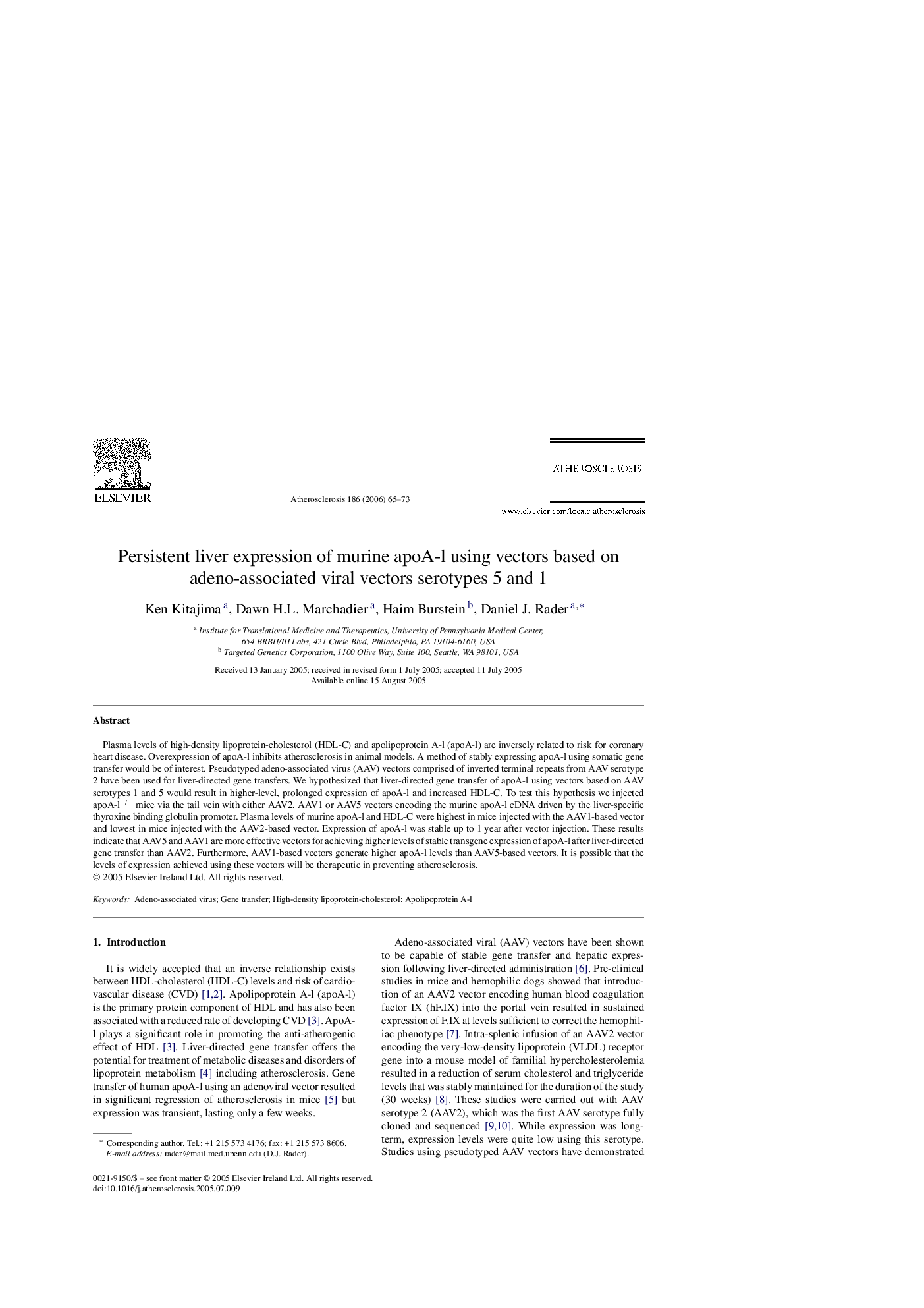| Article ID | Journal | Published Year | Pages | File Type |
|---|---|---|---|---|
| 2895362 | Atherosclerosis | 2006 | 9 Pages |
Plasma levels of high-density lipoprotein-cholesterol (HDL-C) and apolipoprotein A-l (apoA-l) are inversely related to risk for coronary heart disease. Overexpression of apoA-l inhibits atherosclerosis in animal models. A method of stably expressing apoA-l using somatic gene transfer would be of interest. Pseudotyped adeno-associated virus (AAV) vectors comprised of inverted terminal repeats from AAV serotype 2 have been used for liver-directed gene transfers. We hypothesized that liver-directed gene transfer of apoA-l using vectors based on AAV serotypes 1 and 5 would result in higher-level, prolonged expression of apoA-l and increased HDL-C. To test this hypothesis we injected apoA-l−/− mice via the tail vein with either AAV2, AAV1 or AAV5 vectors encoding the murine apoA-l cDNA driven by the liver-specific thyroxine binding globulin promoter. Plasma levels of murine apoA-l and HDL-C were highest in mice injected with the AAV1-based vector and lowest in mice injected with the AAV2-based vector. Expression of apoA-l was stable up to 1 year after vector injection. These results indicate that AAV5 and AAV1 are more effective vectors for achieving higher levels of stable transgene expression of apoA-l after liver-directed gene transfer than AAV2. Furthermore, AAV1-based vectors generate higher apoA-l levels than AAV5-based vectors. It is possible that the levels of expression achieved using these vectors will be therapeutic in preventing atherosclerosis.
